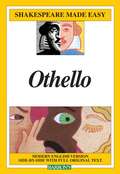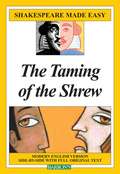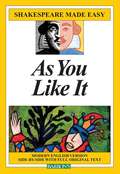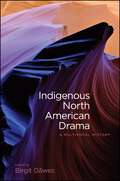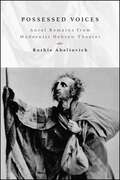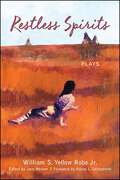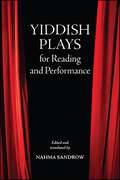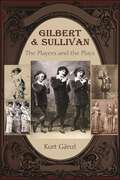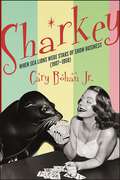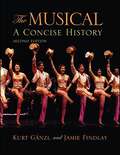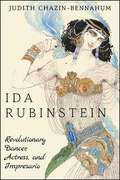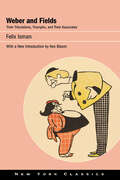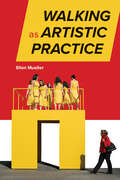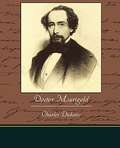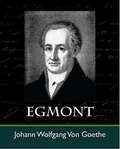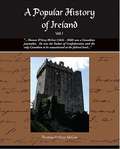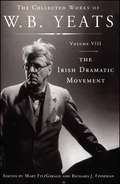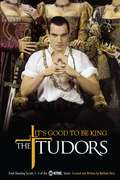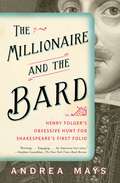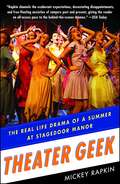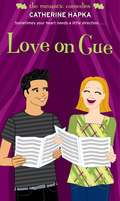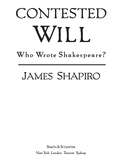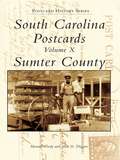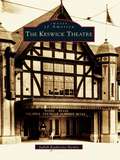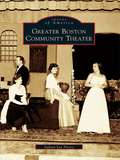- Table View
- List View
Othello: Modern English Version Side-by-side With Full Original Text (Shakespeare Made Easy)
by William ShakespeareA Simon & Schuster eBook. Simon & Schuster has a great book for every reader.
Taming of the Shrew (Shakespeare Made Easy)
by William ShakespeareA Simon & Schuster eBook. Simon & Schuster has a great book for every reader.
As You Like It (Shakespeare Made Easy)
by William ShakespeareA Simon & Schuster eBook. Simon & Schuster has a great book for every reader.
Indigenous North American Drama: A Multivocal History (SUNY series, Native Traces)
by Birgit DäwesResponding to an increasing need for critical perspectives and methodologies, this collection traces the historical dimensions of Native North American drama through overviews of major developments, individual playwrights' perspectives, and in-depth critical analyses. Bringing together writers and scholars from the United States, Canada, and Europe, Indigenous North American Drama provides the first comprehensive outline of this vibrant genre. It also acknowledges the wide diversity of styles and perspectives that have helped shape contemporary Native North American theater itself. This interdisciplinary introduction offers a basis for new readings of Native American and First Nations literature at large.
Possessed Voices: Aural Remains from Modernist Hebrew Theater (SUNY series in Contemporary Jewish Literature and Culture)
by Ruthie AbeliovichFinalist for the 2020 Jordan Schnitzer Book Award in the category of Jews and the Arts: Music, Performance, and Visual presented by the Association for Jewish StudiesPossessed Voices tells the intriguing story of a largely unknown collection of audio recordings, which preserve performances of modernist interwar Hebrew plays. Ruthie Abeliovich focuses on four recordings: a 1931 recording of The Eternal Jew (1919/1923), a 1965 recording of The Dybbuk (1922), a 1961 radio play of The Golem (1925), and a 1952 radio play of Yaakov and Rachel (1928). Abeliovich traces the spoken language of modernist Hebrew theater as grounded in multiple modalities of expressive practices, including spoken Hebrew, Jewish liturgical sensibilities supplemented by Yiddish intonation and other vernacular accents, and in relation to prevalent theatrical forms. The book shows how these recorded performances provided Jewish immigrants from Europe with a venue for lamenting the decline of their home communities and for connecting their memories to the present. Analyzing sonic material against the backdrop of its artistic, cultural, and ideological contexts, Abeliovich develops a critical framework for the study of sound as a discipline in its own right in theater scholarship.
Restless Spirits: Plays (Excelsior Editions)
by William S. Yellow RobeFinalist for the 2020 ForeWord INDIE Book of the Year in the Multicultural Adult Fiction Category Restless Spirits is a collection of previously unpublished plays by contemporary Assiniboine playwright William S. Yellow Robe Jr. Including one full-length and seven one-act plays, this book reflects one of the author's most creative and productive periods in his career. Selected by Yellow Robe, in consultation with editor Jace Weaver, the plays reveal the range of Yellow Robe's writing from tragedies to farce. They are unified by their supernatural themes or significant elements, including Wood Bones, his most recent and highly successful full-length play. Weaver's introduction says that the works in this collection clearly demonstrate that Yellow Robe is not just a great American Indian playwright, but a great American playwright in the company of David Mamet, Lynn Nottage, and Wallace Shawn. Renowned American Indian playwright Hanay L. Geiogamah provides a foreword and calls this volume "a real gift to the American Indian theater—and to theater, more generally."
Yiddish Plays for Reading and Performance (SUNY series in Contemporary Jewish Literature and Culture)
by Nahma SandrowYiddish theater was first and foremost fine theater, with varied repertory and actors of high quality. The three stage-ready plays and nine individual scenes collected here, most of them well-known in Yiddish repertory but never before translated, offer an introduction to the full range of Yiddish theater. Fresh, lively, and accurate, these translations have been prepared for reading or performance by award-winning playwright and scholar Nahma Sandrow. They come with useful stage directions, notes, and playing histories, as well as comments by directors who have worked in both English and Yiddish theater. In the three full-length plays, a matriarch battles for control of her business and her family (Mirele Efros; or, The Jewish Queen Lear); two desperate women struggle over a man, who himself is struggling to change his life (Yankl the Blacksmith); and, in a charming fantasy village, a poetic village fiddler gambles on romance (Yoshke the Musician). The nine scenes from selected other plays are shaped to stand alone and range in genre from symbolist to naturalist, operetta to vaudeville, domestic to romantic to avant-garde. In her preface, Sandrow contextualizes the plays in modern Western theater history from the nineteenth century to the present. Yiddish Plays for Reading and Performance is not nostalgia—just a collection of good plays that also serves as an informed introduction to Yiddish theater at its liveliest.
Gilbert and Sullivan: The Players and the Plays
by Kurt GänzlIn this, the first book to focus on the original cast members of the classic Gilbert and Sullivan comic operas, world-renowned musical theater expert Kurt Gänzl provides a concise history of the writing and production of each opera, vividly colored by the often little-known life stories of these early performers. Meticulously researched and lavishly illustrated with rare photographs, Gilbert and Sullivan: The Players and the Plays delves into the professional and personal lives of the British and American actors and singers who created the celebrated "famous fourteen" Gilbert and Sullivan operas.
Sharkey: When Sea Lions Were Stars of Show Business (1907-1958) (Excelsior Editions)
by Gary BohanGold Winner for the 2022 Foreword INDIES Book of the Year Award in the Performing Arts & Music Category"Sharkey is the natural artist, performing his magic for nothing but love." — Wolcott Gibbs, the New YorkerSharkey tells the compelling story of an unusually gifted, trained sea lion who shared the stage with practically every important performer of the first half of the twentieth century—from Bob Hope to Ella Fitzgerald, from Broadway to Hollywood and beyond. Readers follow Sharkey and his flippered colleagues as they travel the world with stops at the Ringling Bros. and Barnum & Bailey Circus, vaudeville houses, Manhattan during the Harlem Renaissance, burlesque nightclubs, movie palaces, Radio City Music Hall, and the legendary studios of early radio, movies, and television, meeting a who's who of showbiz entertainers, sports superstars, and even a US president. Meticulously researched and lavishly illustrated, Sharkey is a quirky slice of New York and entertainment history sure to delight fans of vintage pop culture and Americana, as well as animal lovers.
The Musical, Second Edition: A Concise History
by Kurt Gänzl Jamie FindlayThe Musical, Second Edition, introduces students and general readers to the entire scope of the history of musical theater, from eighteenth-century ballad operas to nineteenth-century operettas, to the Golden Age of Broadway to today. In this comprehensive history, master theater historian Kurt Gänzl draws on his vast knowledge of the productions, the actors, the music and dance, and the reception of the central repertory of the musical theater. Focus boxes on key shows are included in every chapter, along with a chronology of the major musical productions described in the text. Production photographs from around the world enhance the descriptions of the costumes and staging. This book is an ideal introduction for college-level courses on the History of Musical Theater and will also appeal to the general theatergoer who wants to learn more about how today’s musical developed from its earliest roots.
Ida Rubinstein: Revolutionary Dancer, Actress, and Impresario
by Judith Chazin-BennahumIda Rubinstein (1883–1960) captivated Paris's dancers, composers, artists, and audiences from her time in the Ballets Russes in 1909 to her final performances in 1939. Trained in Russia as an actress and a dancer, her life spanned the artistic freedom of the Belle Époque through the ravages of World War I, the Depression, and finally World War II. This critical biography carefully examines aspects of Rubinstein's life and career that have previously received little attention. These include her early life in Russia, her writing about performance aesthetics, her curated approach to acting and dancing roles, and her encumbered position as a woman and a Jew. Rubinstein used her considerable fortune to produce dozens of plays, lyric creations, and ballets, making her one of the foremost producers of the first half of the twentieth century. Employing the greatest scenic artists, Léon Bakst and Alexander Benois; the distinguished composers Igor Stravinsky, Arthur Honegger, and Claude Debussy; celebrated writers including Paul Valéry and André Gide; and the brilliant choreographer Bronislava Nijinska, Rubinstein transformed twentieth-century theater and dance.
Weber and Fields: Their Tribulations, Triumphs, and Their Associates (New York Classics)
by Felix IsmanJoe Weber and Lew Fields were the dominant musical comedy team at the turn of the last century. They created classic comedic characters and routines and formed their own theatrical troupe, running a theater in New York for many years where they produced successful revues that combined music, dance, and song. So famous were they in their time that they inspired a full-length biography by a major publisher.Weber and Fields follows the duo from their childhood on New York's rough-and-tumble Lower East Side to the creation of their best-known characters, the Dutch knockabout comedians Mike and Myer, and continues with the opening of their own theater in 1896 (with landmark productions through 1904) to their reunion in 1912. This new edition brings an out-of-print classic to a new generation of theater loves. A new introduction by Ken Bloom carries the story through the rest of their careers, showing how Weber and Fields set the stage for comic duos that followed, including Mutt and Jeff of comic book fame, Laurel and Hardy, Abbott and Costello, Rowan and Martin, and countless others.
Walking as Artistic Practice
by Ellen MuellerWalking as Artistic Practice lays out foundational information about the history of walking and its development as an artistic practice, making it accessible to readers of all backgrounds. It also provides guidance on how to analyze and discuss walking artworks, with vocabulary support, over three hundred examples, and over seventy-five exercises. The chapters offer a variety of topical approaches, allowing readers and instructors to craft an experience most suited to their interests and needs. Themes include observational and sensory experience, leading versus following, who walks where (identity and positionality), rituals, place, activism, connections to drawing, and embodiment. Appendices include information on documentation, sample syllabi, readings and resources, brainstorming tips, community engagement guidance, and tips for travel-based study. Instructors will appreciate this text because it has so many resources to direct students to when they have questions about analysis, history, community engagement, or documentation approaches. It's the type of book that students will hang onto long after the course is done because it is so practical and useful.
Doctor Marigold
by Charles DickensOriginally published in 1865, Dr. Marigold was extremely successful, as were Dickens's public performances of a play based on the story - fascinating and easy to read. Doctor (it is his given name) Marigold is a "Cheap Jack" or what we would call a street peddler. Doctor Marigold's fortunes reverse when he adopts a deaf and mute girl whose mother is dead and whose stepfather, owner of a traveling circus, beats her. Dr Marigold recalls an overwhelming passion across two cultures - hearing and deaf.
Egmont
by Johann Wolfgang Von GoetheEgmont is a play by Johann Wolfgang von Goethe, which he completed in 1788. Its dramaturgical structure, like that of his earlier 'Storm and Stress' play Götz von Berlichingen, is heavily influenced by Shakespearean tragedy.
A Lover's Complaint
by William Shakespeare"A Lover's Complaint" is a narrative poem published as an appendix to the original edition of Shakespeare's Sonnets. It is given the title "A Lover's Complaint" in the book, which was published by Thomas Thorpe in 1609. <P> <P> Although published as Shakespeare's work, the poem's authorship has become a matter of critical debate. The majority opinion is that it is by Shakespeare, though of inferior quality to his other works. <P> <P> The poem consists of forty-seven seven-line stanzas written in the rhyme royal (with the rhyme scheme ababbcc), a metre and structure identical to that of Shakespeare's poem The Rape of Lucrece. After a scene-setting introduction, the poem takes the form of a lengthy speech by an abandoned young woman, including a speech within her speech, as she recounts the words by which she was seduced.
The Collected Works of W.B. Yeats Volume VIII: The Irish Dramatic Movement
by Mary Fitzgerald Richard J. Finneran William Butler YeatsThe Collected Works of W. B. Yeats, Volume VIII: The Irish Dramatic Movement is part of a fourteen-volume series under the general editorship of eminent Yeats scholars Richard J. Finneran and George Mills Harper. This complete edition includes virtually all of the Nobel laureate's published work, in authoritative texts and with extensive explanatory notes. Edited by the distinguished Yeats scholars Mary FitzGerald and Richard J. Finneran, The Irish Dramatic Movement gathers together -- for the first time -- all of the poet's time-honored essays on drama and the groundbreaking movement that led to the enduring Irish theater of today. Although the reputation of W. B. Yeats as one of the preeminent writers of the twentieth century rests primarily on his poetry, drama and the theatre were among his abiding concerns. Indeed, in 1917 he wrote, "I need a theatre; I believe myself to be a dramatist." Here in this volume is the collection of all his major dramatic criticism for the years 1899-1919, including previously uncollected material. A practicing dramatist himself, Yeats had strong convictions about the goals of the Irish theater and the appropriate plays to be produced. The essays in this collection address many topics, from the turbulent early years of what became the Abbey Theatre to the controversies over the plays of John Millington Synge and the relationship between drama and nationalism. Also evident are Yeats's judgments on numerous plays, playwrights, and productions, both in Irish and in English. FitzGerald and Finneran's volume includes an Introduction and a History of the Text, as well as copious but unobtrusive annotation. The Irish Dramatic Movement is an essential volume for both readers of Yeats and students of the early years of twentieth-century theater.
The Tudors: It's Good to Be King
by Michael HirstThe Tudors is an intimate, delicious, and daring drama revealing the early years of Henry VIII, an idealistic, lustful tyrant torn between bedding wives and mistresses and conquering Europe. This is not the story of the old, fat Henry you've read about in history books. At eighteen, the throne and the entire world became his. Young, sexy, and the most powerful man of his time, the king was known for his good looks and athletic prowess. He was so arrogant that he despised dealing with the consequences of his actions. King Henry executed people with little excuse, and single-handedly tore apart the Roman Catholic Church, the most powerful institution in medieval Europe. Passionate, vibrant, and scandalous, he forever altered the course of history. The Tudors, a Showtime Original Series starring Jonathan Rhys Meyers, brings to life Henry's tumultuous early years in exquisite fashion. THE BOOK ALSO INCLUDES a foreward by Michael Hirst, creator and executive producer, eight pages of lush, full-color photos, detailed essays about the Tudor era and dynasty Tune into The Tudors on Showtime -- Sundays at 10pm starting April 1st
The Millionaire and the Bard
by Andrea MaysToday it is the most valuable book in the world. Recently one sold for over five million dollars. It is the book that rescued the name of William Shakespeare and half of his plays from oblivion. The Millionaire and the Bard tells the miraculous and romantic story of the making of the First Folio, and of the American industrialist whose thrilling pursuit of the book became a lifelong obsession.When Shakespeare died in 1616 half of his plays died with him. No one--not even their author--believed that his writings would last, that he was a genius, or that future generations would celebrate him as the greatest author in the history of the English language. By the time of his death his plays were rarely performed, eighteen of them had never been published, and the rest existed only in bastardized forms that did not stay true to his original language. Seven years later, in 1623, Shakespeare's business partners, companions, and fellow actors, John Heminges and Henry Condell, gathered copies of the plays and manuscripts, edited and published thirty-six of them. This massive book, the First Folio, was intended as a memorial to their deceased friend. They could not have known that it would become one of the most important books ever published in the English language, nor that it would become a fetish object for collectors. The Millionaire and the Bard is a literary detective story, the tale of two mysterious men--a brilliant author and his obsessive collector--separated by space and time. It is a tale of two cities--Elizabethan and Jacobean London and Gilded Age New York. It is a chronicle of two worlds--of art and commerce--that unfolded an ocean and three centuries apart. And it is the thrilling tale of the luminous book that saved the name of William Shakespeare "to the last syllable of recorded time."
Theater Geek: The Real Life Drama of a Summer at Stagedoor Manor, the Famous Performing Arts Camp
by Mickey RapkinWhat do Natalie Portman, Robert Downey, Jr., Zach Braff, and Mandy Moore have in common? Before they were stars, they were campers at Stagedoor Manor, the premier summer theater camp for children and teenagers. Founded in 1975, Stagedoor continues to attract scores of young performers eager to find kindred spirits, to sing out loud, to become working actors--or maybe even stars. Every summer for the past thirty-five years, a new crop of campers has come to the Catskills for an intense, often wrenching introduction to professional theater. (The camp produces thirteen full-scale productions during each of its three sessions.) These kids come from varying backgrounds--the offspring of Hollywood players from Nora Ephron to Bruce Willis work alongside kids on scholarship. Some campers have agents, others are seeking representation. When Mickey Rapkin, a senior editor at GQ and self-proclaimed theater fanatic, learned about this place, he fled Manhattan for an escape to upstate New York. At Stagedoor, he tracked a trio of especially talented and determined teen actors through their final session at camp. Enter Rachael Singer, Brian Muller, and Harry Katzman, three high school seniors closing out their sometimes sheltered Stagedoor experiences and graduating into the real world of industry competition and rejection. These veteran campers--still battling childhood insecurities, but simultaneously searching for that professional gig that will catapult them to fame--pour their souls into what might be their last amateur shows. Their riveting stories are told in Theater Geek, an eye-opening, laugh-out-loud chronicle full of drama and heart, but also about the business of training kids to be professional thespians and, in some cases, child stars. (The camp has long acted as a farm system for Broadway and Hollywood, attracting visits from studio executives and casting directors.) Via original interviews with former and current campers and staff--including Mandy Moore, Zach Braff, and Jon Cryer--Rapkin also recounts Stagedoor Manor's colorful, star-studded history: What was Natalie Portman's breakout role as a camper? What big-time Hollywood director, then barely a teenager, dated a much older Stagedoor staff member? Why did Courtney Love (at Stagedoor visiting her daughter) get into an argument with a hot dog vendor who had set up shop at the camp? Theater Geek leads readers through the triumphs and tragedies of the three senior campers' final summer in an absorbing, thought-provoking narrative that reveals the dynamic and inspiring human beings who populate this world. It also explores what the proliferation of theater camps says about our celebrity-obsessed youth and our most basic but vital need to fit in. Through the rivalry, heartbreak, and joy of one summer at Stagedoor Manor, Rapkin offers theater geeks of all ages a dishy, illuminating romp through the lives of serious child actors. Rich, insightful, and thoroughly entertaining, Theater Geek pulls back the curtain on an elite and intriguing world to reveal what's really at its core: children who simply love to perform.
Love on Cue
by Catherine HapkaWhen you have to sing your heart out, it's best to know how.... Maggie Tannery is a true theater girl and a total shoo-in for the lead in this year's school production of Romeo and Juliet. She's seriously psyched because it looks like her crush, Daniel, might be playing her Romeo both on- and offstage -- if all goes as planned. But when her school decides to perform a musical instead, Maggie catches a major case of stage fright -- because she can't sing! With her lead role in jeopardy, as well as her chance of winning her leading man, Maggie turns to the musically talented Nico to give her voice lessons. But their voices aren't the only things that seem to be harmonizing. As Maggie tries to break a leg -- and not her heart -- she wonders who the music man of her dreams really is....
Contested Will: Who Wrote Shakespeare?
by James ShapiroFor more than two hundred years after William Shakespeare's death, no one doubted that he had written his plays. Since then, however, dozens of candidates have been proposed for the authorship of what is generally agreed to be the finest body of work by a writer in the English language. In this remarkable book, Shakespeare scholar James Shapiro explains when and why so many people began to question whether Shakespeare wrote his plays. Among the doubters have been such writers and thinkers as Sigmund Freud, Henry James, Mark Twain, and Helen Keller. It is a fascinating story, replete with forgeries, deception, false claimants, ciphers and codes, conspiracy theories--and a stunning failure to grasp the power of the imagination. As Contested Will makes clear, much more than proper attribution of Shakespeare's plays is at stake in this authorship controversy. Underlying the arguments over whether Christopher Marlowe, Francis Bacon, or the Earl of Oxford wrote Shakespeare's plays are fundamental questions about literary genius, specifically about the relationship of life and art. Are the plays (and poems) of Shakespeare a sort of hidden autobiography? Do Hamlet, Macbeth, and the other great plays somehow reveal who wrote them? Shapiro is the first Shakespeare scholar to examine the authorship controversy and its history in this way, explaining what it means, why it matters, and how it has persisted despite abundant evidence that William Shakespeare of Stratford wrote the plays attributed to him. This is a brilliant historical investigation that will delight anyone interested in Shakespeare and the literary imagination.
Birmingham's Theater and Retail District (Images of America)
by Tim HollisFrom the 1890s to the 1970s, the thriving area of Birmingham between Eighteenth and Twenty-first Streets along First, Second, and Third Avenues was the bustling heart of this quickly growing city. Before the age of the shopping mall, the downtown was the center of retail and entertainment in Birmingham. Along these streets, entrepreneurial immigrants built department stores--including Pizitz and Loveman, Joseph, and Loeb--while the marquees of the Alabama, Ritz, and Lyric theaters, among others, shined over the busy downtown sidewalks.
Keswick Theatre, The (Images of America)
by Judith Katherine HerbstThe Keswick Theatre, located just outside Philadelphia, opened in 1928 in an era when four thousand similar structures were in various stages of design and construction across the country. Vaudeville was in its final days and film was just being born. Designed by acclaimed architect Horace Trumbauer, the theater evolved into the area's premier movie house. When the theater was threatened with demolition in the early 1980s, the Glenside Landmarks Society was formed with the hopes of restoring the building to its former grandeur. Today, operating as a commercial venture, it is one of the most acclaimed concert halls in the Philadelphia area. The Keswick Theatre celebrates this historic landmark through vintage images and recognizes the dedicated community members who have kept its doors open.
Greater Boston Community Theater
by Judson Lee PierceThe roots of community theater can be traced back to before the Revolutionary War. In the years that followed, many towns throughout America were fortunate to have both professional and amateur acting companies. The evolution of the moving picture forced many of these professional theaters to close their doors, but theater lovers in small communities still wanted the real thing, live theater. Today there are numerous community theater groups around the Boston area, including the oldest continuing community theater group in the country, the Footlight Club, which was founded in 1877. In the spirit of community, many theater companies donate to charities and sponsor playwriting contests and scholarship programs. They all share a common goal: bring live theater to suburban communities. Greater Boston Community Theater presents rare photographs from more than a dozen community theaters to document and celebrate the rich tapestry of theater life.
